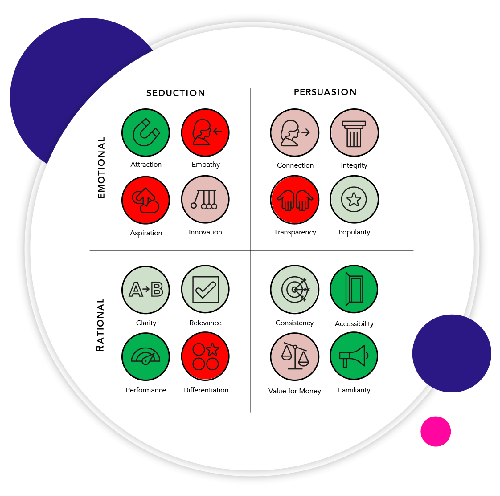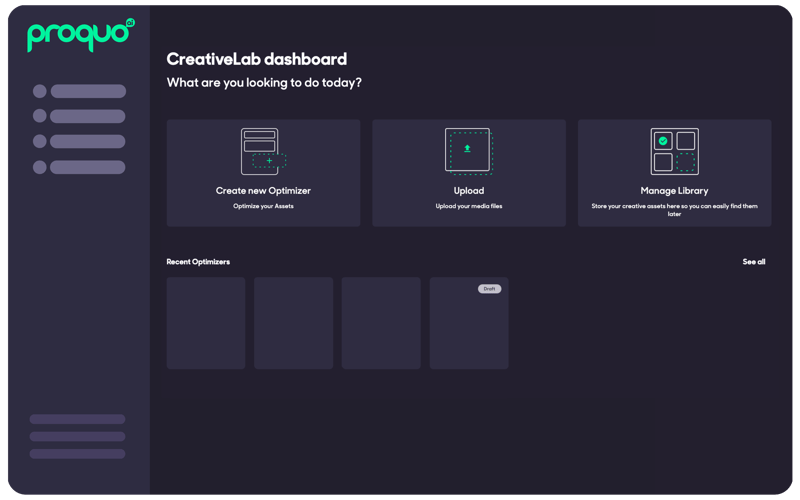Posted on April 29, 2021
Updated on March 13, 2023
5 min read time

To ensure your next product is up to scratch, you’ll need a solid understanding of the needs of your category, a creative optimizer to test the strengths of your creative assets and ideas before launching, and an effective feedback loop, so you can continuously iterate and improve on your product as you go.
To find out how to do just that, we've laid out 6 steps below.
Step 1: Define your objectives
The first stage in any product development process is to define what you would like to achieve through this new venture.
What is your company hoping to gain through this launch? Is your key objective to steal market share, drive penetration within the category, or to increase the memorability of your brand?
Whichever direction you decide to go in, your objectives should be tangibly linked to your company’s financial goals. Any new product in your portfolio has to add incremental value to your company. So, consider how the new addition will impact the revenue stream of your business.
Step 2: Create your product concept
Every good product concept has the same universal core elements behind its foundation:
These elements will guide your product development in the right direction, ensuring your concept is aligned with your business objective, is geared towards your target audience, and provides added value to the market.
For more information on how to develop a killer product concept, why not check out our latest guide, ‘How to Launch New Product Development: From idea to aisle?’ It will take you through the steps needed to execute a successful product concept, from identifying a target audience, to understanding the opportunity space, and developing a go-to-market-strategy.
Step 3: Deep dive into your category
Now you’ve got your objectives and your concept, the next stage is to scope out the playing field. Products that are closely linked to the needs of the category are more likely to be a success, as they are more aligned with the consumer base they are targeting.
Consider:
Once you’ve got a good understanding of what consumers find important in your category, you can identify whether your product meets these requirements. Think of these baseline needs as ‘hygiene factors’. They are necessary to compete with existing players in the market. Without them, your product won’t stand a chance.
To identify the hygiene factors in your category, you can use our 16 Driver framework. These are the 16 factors that determine every relationship. And they are especially important for determining the strength of a brand’s relationship with its consumers.
Our Drivers are divided into rational and emotional needs. The Drivers you focus on will vary depending on the needs of your category. For example, the beer category is typically driven by more rational needs, like Performance (how great the beer tastes) and Value For Money (how well the brand justifies its cost), whereas perfume has always been more driven by emotional needs like Aspiration (how special your product is) and Innovation (how forward-looking your product offering is perceived to be).

The 16 Drivers can be used to inform your observations into the category. Go into a store, or search online, and see how brands present themselves. How do they communicate? Are they more rationally driven or emotional? A brand’s positioning is often clear from their packaging, so look at the claims, benefits, colours and materials they use. All of these components will tell you something about the brand, and about the Drivers they are majoring on in their activation in market.
To gain a more accurate and up-to-the-minute analysis of your category, you can also use ProQuo’s always-on Brand Management platform. Through the platform, you can identify where your competition is operating, who the market leader is, and how your brand is performing, against these variables. This will help you to inform your brand strategy, so you can know which Drivers to focus on to ensure your product positioning has the best possible chance for success.
Step 4: Execute your product strategy
When executing your brand strategy, look at the hygiene factors your brand has to deliver on as a minimum to compete in the category. These are the Drivers that the category believes are the most important when deciding to interact with a brand or not. This is where you should focus your product on first, to ensure you’re keeping up with what consumers expect of you. For example, if Value For Money was a hygiene factor in your category, and your product was priced considerably higher than your competitors, you’d need to work on this first to drive trial.
But if you’re a challenger brand, you can’t win on hygiene factors alone, as the market leader will usually champion these Drivers. Sometimes, it’s better to adapt your strategy to compete on under-penetrated areas, where there’s less competition.
Consider your objectives for your NPD and decide which Drivers will best help you to get there. If your objective was to steal market share, for example, and you could see your competitors were overly focused on rational Drivers, you may want to focus on a few of the emotional Drivers to gain attention, carve out your own space and disrupt the norms of your category.
Step 5: Optimize your product offering
CreativeLab is an optimizer available on our Brand Management platform, enabling you to test individual assets and executions at any stage in your creative development process.
The optimizer can be used at any stage in your development process, for product ideas, mood boards, social assets and much more! It can even inform your decisions on product flavors, styles and materials.
With CreativeLab you receive a granular overview on your assets, which allows you to optimize concepts before going live, so you can save money and be confident the ideas you’re using are the right ones to grow your brand.

Step 6: Create a feedback loop
Creating a product is an iterative process and products should be re-examined frequently, as category and audience needs will change over time.
Once your product is in market, you should create a feedback loop so you can learn from previous mistakes. See if people are buying your product, and if not, learn from it. An understanding of how people are relating to your brand in market, is key. And that’s why it’s better to launch early and iterate your offering, rather than spend more money and time creating a product that may not land
In the feedback loop, try to gain information on:
Look at trial and repeat. Do people grab it off the shelves? Will people buy it again? What are the barriers to repeat purchase?
If a product is eye-catching it may be bought once, but if its quality is low, repeat purchases will also be low. To guarantee repeat purchase, a brand needs to deliver on their promises. If the product promises to be nutritious and healthy but is actually highly sugary and synthetic, for example, it’s not meeting its promise. The end-result of the product doesn’t relate to what the consumer has been primed to experience and therefore this product won’t drive repeat purchase.
Reviews are a great way of understanding how people feel about a brand, or you can always use your data from ProQuo to learn how people are reacting to your product, in real-time.
If you’re interested in learning more about the product concept development process, head to our guide on launching new products – from idea to aisle.
Our intelligent platform will take your brand further, faster.
Don’t believe us?
© 2020-2023 ProQuo AI International
All rights reservedWebsite by Blend